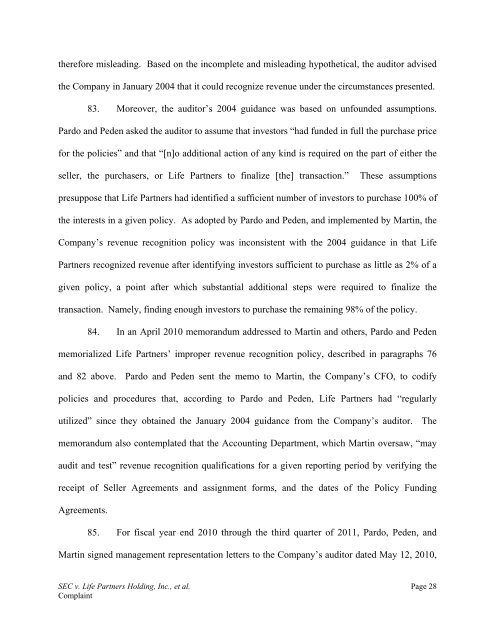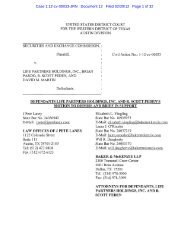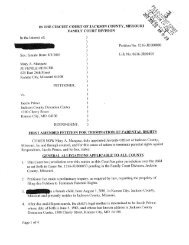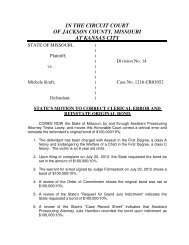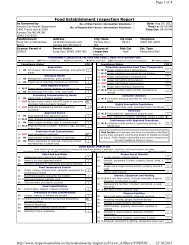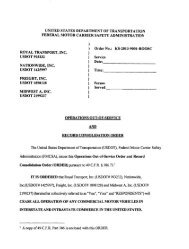Life Partners Holdings, Inc., Brian D. Pardo, R. Scott Peden, and ...
Life Partners Holdings, Inc., Brian D. Pardo, R. Scott Peden, and ...
Life Partners Holdings, Inc., Brian D. Pardo, R. Scott Peden, and ...
Create successful ePaper yourself
Turn your PDF publications into a flip-book with our unique Google optimized e-Paper software.
therefore misleading. Based on the incomplete <strong>and</strong> misleading hypothetical, the auditor advisedthe Company in January 2004 that it could recognize revenue under the circumstances presented.83. Moreover, the auditor’s 2004 guidance was based on unfounded assumptions.<strong>Pardo</strong> <strong>and</strong> <strong>Peden</strong> asked the auditor to assume that investors “had funded in full the purchase pricefor the policies” <strong>and</strong> that “[n]o additional action of any kind is required on the part of either theseller, the purchasers, or <strong>Life</strong> <strong>Partners</strong> to finalize [the] transaction.” These assumptionspresuppose that <strong>Life</strong> <strong>Partners</strong> had identified a sufficient number of investors to purchase 100% ofthe interests in a given policy. As adopted by <strong>Pardo</strong> <strong>and</strong> <strong>Peden</strong>, <strong>and</strong> implemented by Martin, theCompany’s revenue recognition policy was inconsistent with the 2004 guidance in that <strong>Life</strong><strong>Partners</strong> recognized revenue after identifying investors sufficient to purchase as little as 2% of agiven policy, a point after which substantial additional steps were required to finalize thetransaction. Namely, finding enough investors to purchase the remaining 98% of the policy.84. In an April 2010 memor<strong>and</strong>um addressed to Martin <strong>and</strong> others, <strong>Pardo</strong> <strong>and</strong> <strong>Peden</strong>memorialized <strong>Life</strong> <strong>Partners</strong>’ improper revenue recognition policy, described in paragraphs 76<strong>and</strong> 82 above. <strong>Pardo</strong> <strong>and</strong> <strong>Peden</strong> sent the memo to Martin, the Company’s CFO, to codifypolicies <strong>and</strong> procedures that, according to <strong>Pardo</strong> <strong>and</strong> <strong>Peden</strong>, <strong>Life</strong> <strong>Partners</strong> had “regularlyutilized” since they obtained the January 2004 guidance from the Company’s auditor. Thememor<strong>and</strong>um also contemplated that the Accounting Department, which Martin oversaw, “mayaudit <strong>and</strong> test” revenue recognition qualifications for a given reporting period by verifying thereceipt of Seller Agreements <strong>and</strong> assignment forms, <strong>and</strong> the dates of the Policy FundingAgreements.85. For fiscal year end 2010 through the third quarter of 2011, <strong>Pardo</strong>, <strong>Peden</strong>, <strong>and</strong>Martin signed management representation letters to the Company’s auditor dated May 12, 2010,SEC v. <strong>Life</strong> <strong>Partners</strong> Holding, <strong>Inc</strong>., et al. Page 28Complaint


